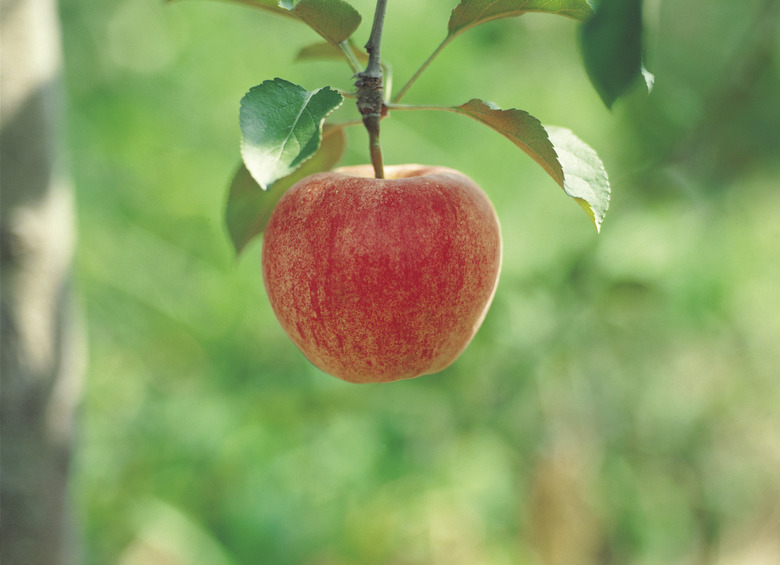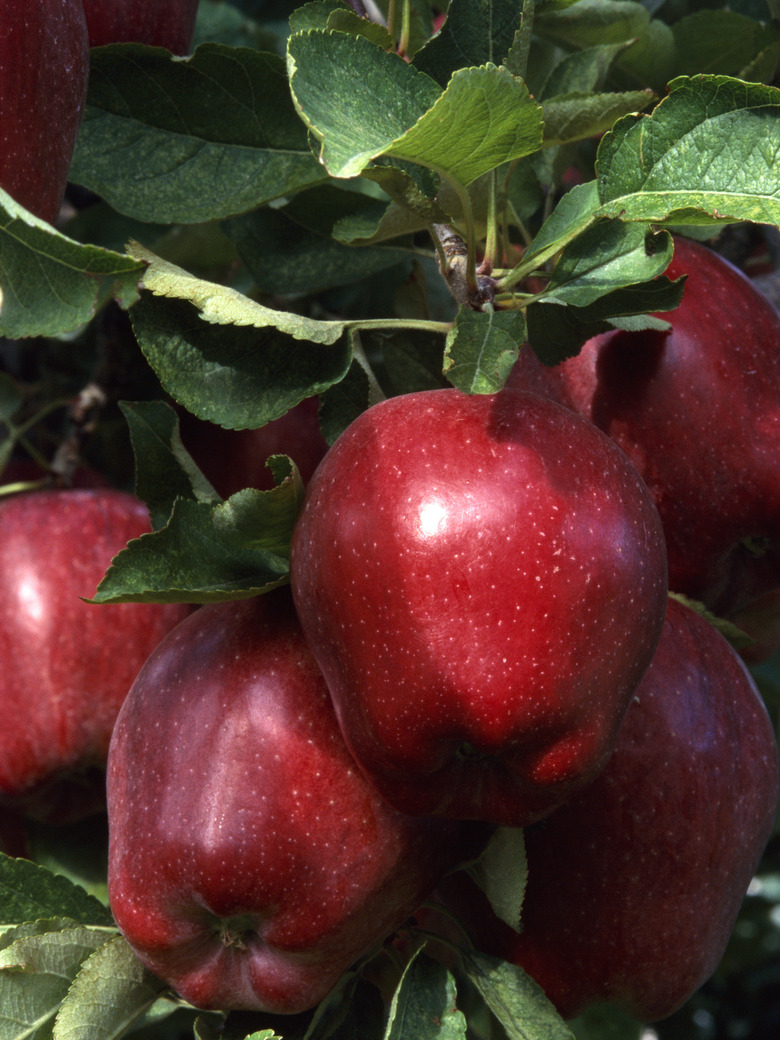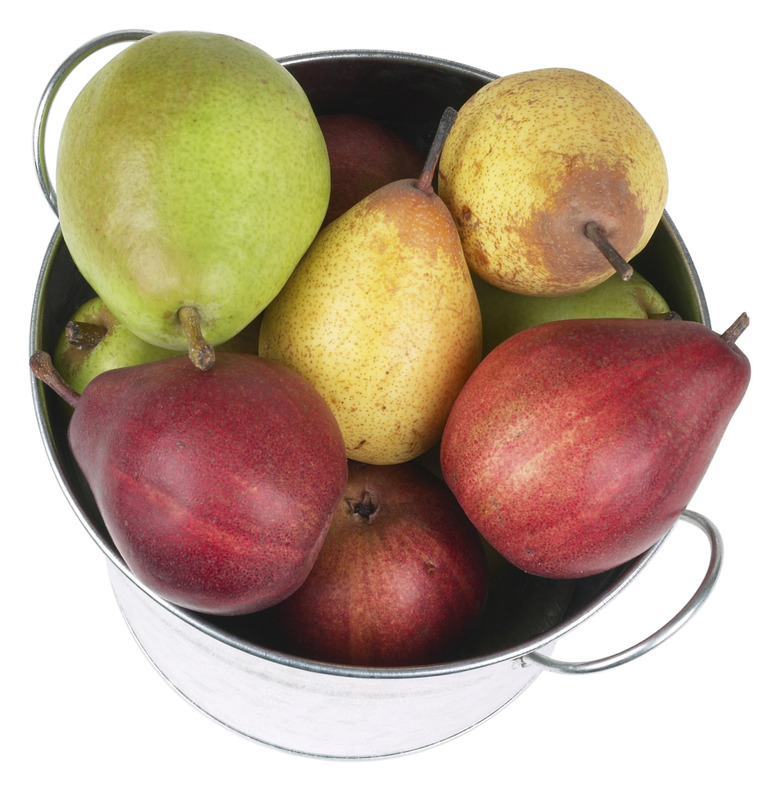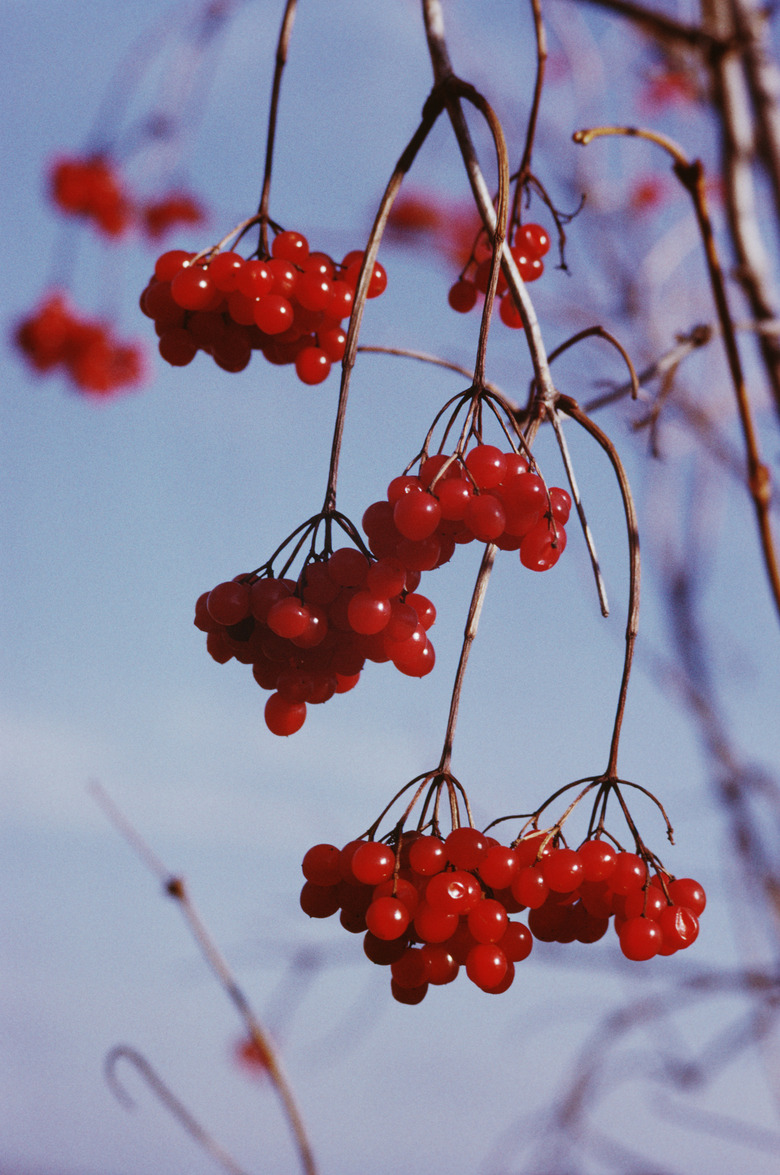List Of Zone 6 Fruit Trees
United States Department of Agriculture (USDA) zone 6 is one of the plant hardiness sectors across North America. This zone extends from northeast Washington state in a saddle that goes down through eastern Oregon across most of Nevada and Utah (skipping most of Colorado), and continues through Missouri, Illinois, Indiana, Ohio, Pennsylvania, parts of New York, as well as Massachusetts and Rhode Island. Zone 6 is growth-friendly for a number of specific types of fruit trees, according to the Oregon State University cooperative extension.
Apple Trees
Gala apples grow on semi-dwarf trees; reddish-yellow galas are sweet, crisp eating apples harvested in the fall. A number of fall-harvested, multi-purpose apples—those that are good for both eating and cooking—are also hardy in zone 6. Red halareds are tart, juicy and harvested from semi-dwarf trees in the late fall. Liberty and red McIntosh also grow on semi-dwarf trees and are tart, crunchy, disease-resistant specimens. The dwarf honeycrisp apple tree bears light red fruit that is sweet and juicy. Very tart and juicy, and harvested in late summer, the lodi apple is best used in sauces and pies.
Asian and European Pear Trees
Asian pears that do well in zone 6 include the very flavorful kosui, sweet and reliable shinsui, juicy and sugary atago, the exotic-looking yellow-skinned shinseiki, and two varieties of brown-skinned pears: the butterscotch-flavored yoinashi and aromatic seuri. In the European pears, the best eating pear is the green-skinned conference that is sweet and juicy. Harvested while green, bartletts turn yellow and are also a favorite eating pear. They also are good for canning. Green and russet bosc pears are juicy and sweet for eating and bake and dry well. The orange-hued rescue pear is good for canning, drying and eating, as is the big yellow orca.
Other Fruit Trees
Plums, cherries, peaches, apricots and hardy kiwis grow well in some areas of zone 6, but may not be consistent and prolific fruit bearers. Choose green gage, Italian prune, mount royal, and Stanley plums for eating and drying into prunes. Sweet cherry varieties for this zone consist of Benton, index, Stella, sweetheart, and lapins. Pie cherry varieties are surefire, Danube, Montmorency and northstar. Reliance peaches are the best choice for zone 6, and Chinese sweet pit, moongold and sungold apricots also do relatively well. There are no recommended nectarine varieties for this hardiness zone.



